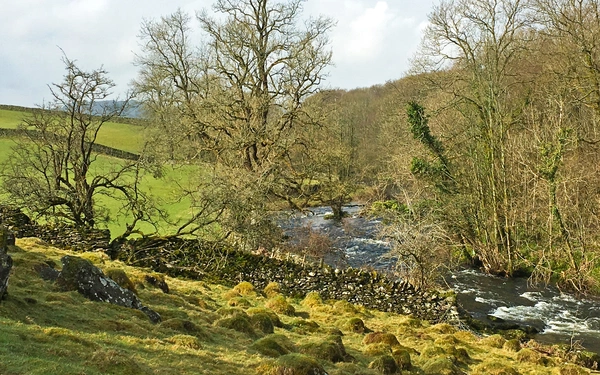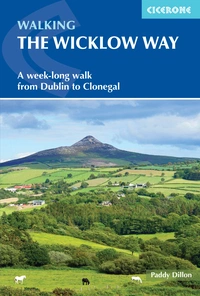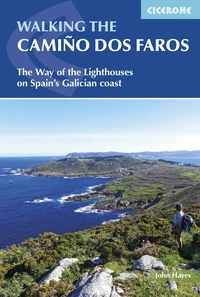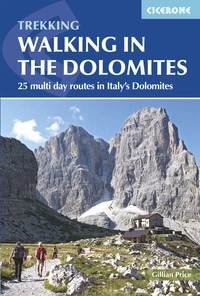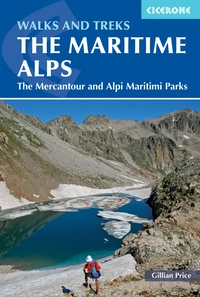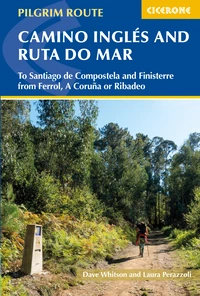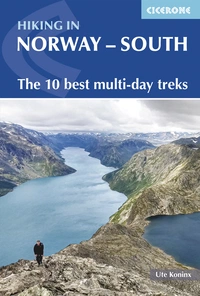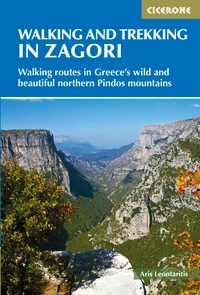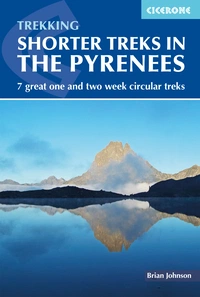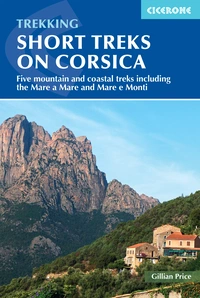Top 10 international long-distance walks you can do in a week
Whether you’re exploring the rugged trails of the Pyrenees, the coastal beauty of the Camino dos Faros in Spain, the dramatic vistas of Zagori in Greece, or the scenic Karnischer Höhenweg along the Austrian-Italian border, countless international long-distance routes can be completed within a week. Here, we showcase the best trails, perfect for those who want to experience stunning scenery, rich history, and vibrant local traditions in just a few days.
1. THE WICKLOW WAY
Wicklow mountains, lakes, glens, mining heritage
Where: Ireland
How long: 146km
How many days: 7 days
How hard: suitable for any reasonably fit walker
Season: the best weather is likely to be in summer, but spring and autumn can be good
Starting at the edge of Dublin, a city full of heritage, the route quickly climbs into the Dublin Mountains for extensive views. Passing through the moorland heart of the Wicklow Mountains, the trail takes in the tranquil lakes and forested glens before visiting historic Glendalough and the ruins of the Monastic City. The scenic Military Road is encountered from time to time en route to Clonegal, where Huntington Castle can be visited.
Fun fact: The Wicklow Way was the first long-distance trail to be established in Ireland.
Walking the Wicklow Way
A week-long walk from Dublin to Clonegal
£14.95
A guide to walking Ireland's Wicklow Way, a 146km trail through the scenic Wicklow Mountains from Dublin to Clonegal, County Carlow. The waymarked route is presented in 7 stages, taking in rolling countryside, forest trails and wild mountain landscapes, as well as the historic monastic site of Glendalough. Optional variants are also included.
More information2. THE KARNISCHER HOHENWEG
A 'living museum' of the First World War front line
Where: Austria/Italy
How long: 170km
How many days: 1-2 weeks (depending on whether the Austrian or Italian route is taken)
How hard: high mountain walking suitable for trekkers with some experience
Season: mid-July till the end of September
The Karnischer Höhenweg runs from Sillian in the west to Thörl-Maglern in the east. The waymarked hut-to-hut trail runs the length of an alpine ridge, with wonderful views of the Dolomites to the south and the Hohe Tauern to the north, as it follows the First World War front line (today’s border between Austria and Italy).
Bonus fact: Also known as the ‘Carnic Peace Trail’, the route was established in the 1970s to commemorate the First World War.
The Karnischer Hohenweg
A 1-2 week trek on the Carnic Peace Trail: Austria and Italy
£15.95
English-language guidebook to the Karnischer Höhenweg, a 170km waymarked hut-to-hut trek along the border between Italy and Austria. Also known as the Carnic Peace Trail, it runs west to east along the ridge of the Carnic Alps, the site of the WW1 front line. With information on planning your trip, accommodation and the history of the area.
More information3. CAMINO DOS FAROS
Dramatic cliffs and Galician culture
Where: the Galacian coast in northwest Spain
How long: 200km
How many days: around 1 week
How hard: Tougher than it looks! Suitable for those with a good level of fitness.
Season: year-round walking, but best walked in April, May and June, when the light and the flowers are wonderful
The Camiño dos Faros explores the remote north west corner of Spain, following a path from the old whaling port of Malpica on the north coast to Fisterra (Finisterre), Spain’s Land’s End, on the west coast. The route involves spectacular cliff tops, perfect empty beaches and quieter secluded river estuaries. The coast is wild, battered by storms racing in from the Atlantic, and is one of the world’s most dangerous areas for shipping. ‘Dos Faros’ refers to a series of lighthouses which warn sailors of the coast's perils with foghorns and powerful beams. The Camiño dos Faros is very much a Galician walk, introducing the culture, cuisine and ambiance of this distinctive and scenic part of Spain.
Fun fact: This windswept cape was known as the “ends of the Earth” in centuries past.
Walking the Camino dos Faros
The Way of the Lighthouses on Spain's Galician coast
£14.95
Guidebook to walking the Camino dos Faros, the way of the lighthouses, along the Galician coast in northwest Spain. The 200km route is described across 8 stages of between 17 and 29km and takes in some of the area's most wild and enchanting coastal scenery, with dramatic cliffs and deep river estuaries. Incorporates some challenging walking.
More information4. WALKING IN THE DOLOMITES
UNESCO World Heritage site
Where: Italy
How long: between 15 and 40km (25 multi-day treks are given in the guidebook)
How many days: 2-4 days per trek
How hard: moderate and challenging routes – a good head for heights and level of fitness is required
Season: mid-June to late September, when most of the refuges are open
The itineraries in this guidebook introduce walkers to each of the main Dolomite groups, their unique formations and landscapes. The majority are rewarding circular routes or extended traverses linking different valleys in a journey through cultures, history and nature. The Dolomites offer breathtaking alpine scenery among mountains flanked by well-graded paths and excellent mountain refuges. The region is easily accessible by extensive public transport from Venice, Verona, Munich and Innsbruck.
Fun fact: The Dolomites are nicknamed the 'Pale Mountains' due to the light grey colour of their rocks.
Walking in the Dolomites
25 multi-day routes in Italy's Dolomites
£17.95
Guidebook to 25 multi day walks in the Dolomites mountains of northeast of Italy. The walks are mostly circular and 2 to 4 days long, and take in the Marmarole, Marmolada, Civet, Sella and Cortina Dolomites among others. Includes notes on accommodation, wildlife, transport, equipment, a glossary and other practical information.
More information5. THE MOUNTAINS OF MONTENEGRO
Wild, spectacular, seldom-visited mountains
Where: Montenegro
How long: between 23 and 42km (8 multi-day treks are given in the guidebook)
How many days: 2-7 days per trek
How hard: some treks include strenuous mountain traverses with scrambling and exposed sections.
Season: June to September
The Dinaric Alps of Montenegro are some of the wildest, most spectacular and least visited mountains in Europe. But they are easily accessible, and many areas have well-marked trails. Some even say they are more beautiful than the Alps... Highlights include Montenegro's five national parks - Durmitor, Prokletije (on the the Albanian border), Biogradska gora, Lovćen and Lake Skadar (the largest lake in the Balkans, plentiful birdlife), as well as several other areas including Orjen, Komovi, Kučka krajina, Tara Canyon (the deepest canyon in Europe).
Fun fact: Montenegro, when translated from Italian, means 'Black Mountain.'
The Mountains of Montenegro
A Walker's and Trekker's Guide
£16.95
This guidebook to Montenegro includes 17 walks and trekking routes throughout the Dinaric Alps, in Montenegro's five national parks as well as Orjen, Komovi, Tara Canyon and the UNESCO-listed old town of Kotor. The circular and linear routes range from easy hour-long outings to challenging 5-day treks involving exposure and scrambling.
More information6. THE MARITIME ALPS
Coastal beauty and alpine grandeur
Where: France and Italy
How long: between 21 and 67km (6 multi-day treks are given in the guidebook)
How many days: 2-5 days per trek
How hard: exposed paths means confident navigation is required
Season: mid-June to late September is guaranteed for snow-free paths and open huts; July and August spell wildflowers galore; October means crystal-clear visibility and having the whole place to yourself
Rising directly from the Mediterranean Coast the Maritime Alps straddle the French-Italian border for 190km. Easily accessible from Nice, and with good waymarking and plentiful high-quality accommodation, this is a wonderful area even for novice walkers, worlds away from the crowds at the coast. A great introduction to high mountain walking.
Fun fact: The Maritime Alps are in fact one of the richest Alpine areas for flora and fauna in Europe.
Walks and Treks in the Maritime Alps
The Mercantour and Alpi Marittime Parks
£16.95
This guidebook describes 18 day walks and 6 long distance routes. The treks include a 5-day traverse of the French Mercantour National Park and a 7-day traverse of the Alpi Maritime Park, and the walks range from 6 to 20km in length. The routes are suitable for novices and experienced trekkers alike.
More information7. THE CAMINO INGLES
Rich history, beautiful landscapes, vibrant culture
Where: Galicia, Spain
How long: 118km
How many days: less than a week
How hard: suitable for any walker
Season: summer is the best time to fully enjoy the coastal towns
While the scenery of the Galician portion of the Camino Francés is stunning, it can be challenging for some to fully enjoy this walk due to the surging pilgrim traffic. Those seeking the best of both worlds – Galician grandeur and peaceful, contemplative walking conditions – have been drawn in recent years to the Camino Inglés, a much shorter pilgrimage that originates on the northern coast, either in Ferrol or A Coruña. The Inglés, so called because it was popular with pilgrims traveling via boat from the British Isles, offers many of the same qualities that make the Francés so popular, including reliable waymarking, consistent pilgrim hostels, and the opportunity to earn the Compostela in Santiago, a certificate that confirms and commemorates your pilgrimage.
Fun fact: The food is fantastic throughout the route. Specialities include betanzos omelette and santiago cake.
The Camino Ingles and Ruta do Mar
To Santiago de Compostela and Finisterre from Ferrol, A Coruna or Ribadeo
£14.95
Guidebook to walking the Camino Inglés and Ruta do Mar pilgrim routes in northwest Spain. Describes the 116km Camino Inglés from Ferrol or A Coruña to Santiago de Compostela and the of the 190km Ruta do Mar linking Ribadeo with the Inglés at Ferrol. Includes the 120km Camino Finisterre from Santiago to Finisterre or Muxia.
More information8. SOUTHERN NORWAY
Norway's highest peaks
Where: Jotunheimen, Rondane, Dovrefjell, Trollheimen and Ryfylke
How long: 41 to 152km
How many days: 3-8 days
How hard: a good level of fitness is required, as well as some experience of mountain hiking
Season: mid-July to the end of September
Ten of the best short mountain and fjord treks in Southern Norway (south of Trondheim), many of them combinable, covering the major national parks and other areas of outstanding natural beauty. This part of Norway is home to Scandanavia's highest peaks and glaciers, deep shimmering fjords and epic 'vertigo hikes' which will leave you awestruck. Wide, open and sometimes unforgiving landscapes await, yet every evening you are greeted by one of the most hospitable environments you could encounter in such remoteness: the mountain huts and lodges of the Norwegian Trekking Association.
Fun fact: Friluftsliv refers to the Norwegian's love of the outdoors, and includes outdoor kindergartens, government-sponsored outdoor gear libraries, and a bachelor's degree program.
Hiking in Norway - South
The 10 best multi-day treks
£18.95
Guidebook describing 10 short treks in southern Norway, plus a handful of variants. The hut-to-hut routes, of 3 to 8 days, cover Jotunheimen, Rondane, Dovrefjell, Trollheimen and Ryfylke, and an ascent of Galdhopiggen, Norway's highest peak at 2469m, is included. Suitable for competent hikers with experience of navigation and mountain weather.
More information9. TREKKING IN ZAGORI
Northern Pindos National Park
Where: northwestern Greece
How long: 15 to 45km (3 multi-day treks are given in the book)
How many days: 2-3 days
How hard: experience in high mountain terrain is required
Season: springtime (end of May - June) and autumn (September - October) when the sun and temperatures are milder and the region quieter
The Zagori and Konitsa regions of mainland Greece are some of the last relatively undiscovered and unspoilt hiking destinations in Europe. Highlights of the area include the famous Vikos Gorge and the alpine tarn of Drakolimni (Dragonlake), along with the picturesque villages, cobblestone paths and stone bridges characteristic of Zagori. However, there are many more hidden beauties lying within these legendary mountains and this selection of treks showcases these stunning landscapes.
Fun fact: The Vikos Gorge in Zagoria is the second deepest gorge in the world after the Grand Canyon in the USA.
Walking and Trekking in Zagori
Walking routes in Greece's wild and beautiful northern Pindos mountains
£17.95
Guidebook to 30 walks and 3 treks centred on Zagori and Konitsa in mainland Greece. From easy strolls to demanding hikes along remote mountainous traverses, including the rugged peaks of Mt Timfi and Mt Smolikas in the Pindos range, Drakolimni Lake, and the dramatic Vikos Gorge. With background information on architecture, history and wildlife.
More information10. SHORTER TREKS IN THE PYRENEES
Rugged peaks, deep valleys, and scenic beauty
Where: northwestern Greece
How long: 70-89km
How many days: 4-7 days
How hard: reasonable fitness and previous mountain experience is required
Season: best walked from July to September
The Pyrenees, bordering France and Spain and rising over 3000m, stretch over 400km from the Atlantic to the Mediterranean and offer a diverse range of walking experiences. The GR10, GR11 and Haute Route Pyrénées (HRP) are fantastic long-distance trails that explore this magnificent mountain range, but most walkers cannot spare the time to be away from home for the 35–50 days required to complete them. There are several fantastic shorter routes that can be completed within a week, that showcase the varied landscape. Expect to see high passes, rugged mountains dotted with lakes and tarns, and beautiful wildflower meadows, glaciated limestone and granite massifs with spectacular terrain.
Fun fact: You might think of the Pyrenees as a mountainous region, but did you know there are 19,465 (!) named mountains in the range?
Shorter Treks in the Pyrenees
7 great one and two week circular treks
£18.95
Guidebook detailing seven circular treks of 4-12 days in the beautiful Pyrenees. The varied routes cover both sides of the French-Spanish border and include both the High Pyrenees and the lower, more gentle mountains of the Basque Country and Catalonia. Variants are suggested for those wishing to shorten or extend the treks.
More informationThat concludes our recommendations for international long-distance walks that can be done in a week. There are countless to explore, each with its own unique character and challenges, whether it be a through a national park, a mountainous adventure, or an adventure with some tantalising cuisine or historical interest. Enjoy!
If you're looking for an adventure a bit closer to home, here are our recommendations for the best UK long-distance walks you can do in a week.

